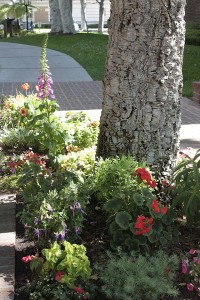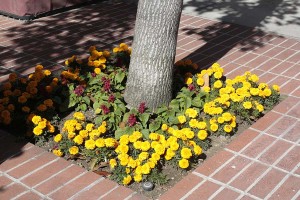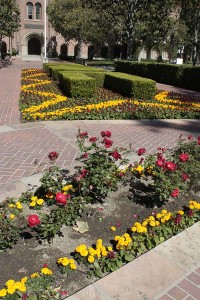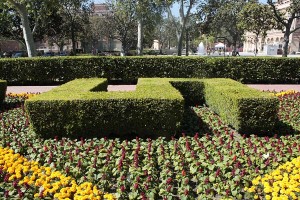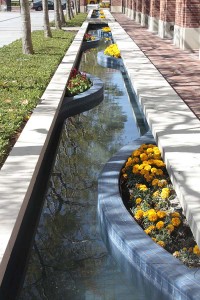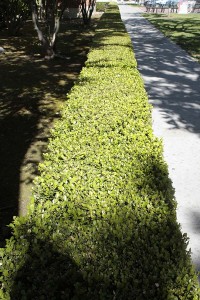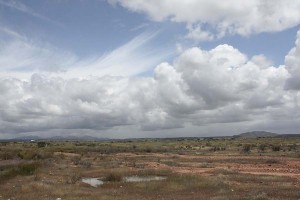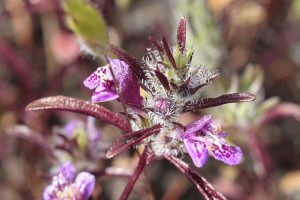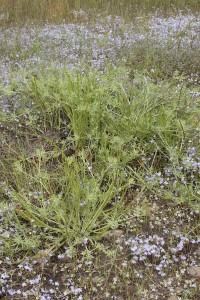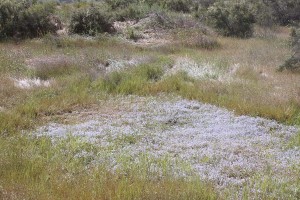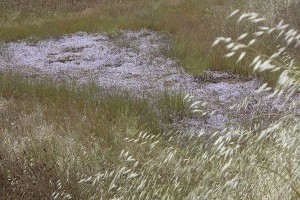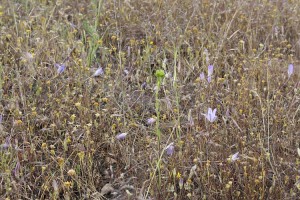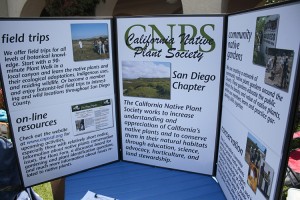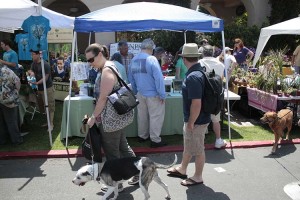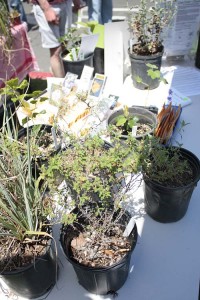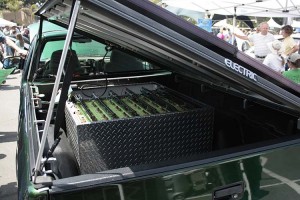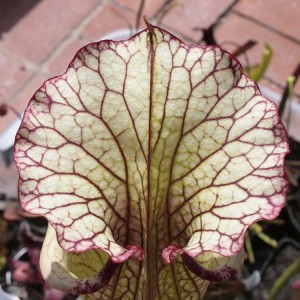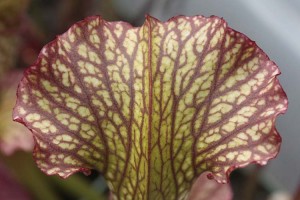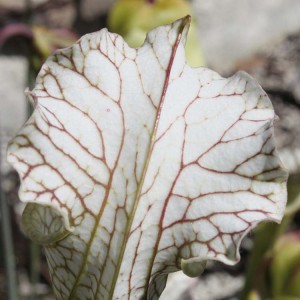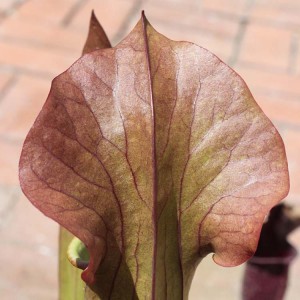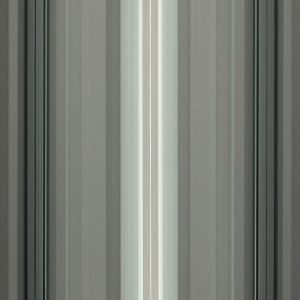Here’s a little weekend quiz: Any guesses as to where I took this picture?
Does this second photo help?
Clue #1: It’s in Los Angeles.
Clue #2: It’s a university campus.
Clue #3: The school colors are echoed in the flower colors of the landscaping.
If you’re not into universities and their colors the answer is USC, the University of Southern California, where the planting color scheme features the campus colors of cardinal and gold. If you were to ask me for my opinion I’d offer that they’re probably fine colors for football uniforms but a little strident for most garden situations if they were the only colors you used. But the entire campus was vibrating with new plantings of red salvias and yellow-orange marigolds, with a few leftover winter plantings of pansies in similar colors.
I mentioned the plantings to one of the campus regulars I was up there to meet with. Apparently USC has an endowment (by what was probably an enthusiastic alumnus) to supply bedding plants in the school colors.
From the themed seasonal color, to the lawns, to the hedges, to the fanatically clipped creeping fig around the Romanesque windows, to the trees planted in regimented rows, it’s so not my philosophy of gardening.


But for an urban campus set where the warm season is just that, the tall trees provide welcome shade and the many benches set in the plantings make for opportunities to sit and hold conversations. And the style of the landscape seems to come straight out of a tradition of how a campus should look: neat, orderly, with a sense that many things of worth come from Europe.
My parents met on this campus way back when. Looking at the comfortable but formal plantings, I think I that can understand them a little better, the attitudes where they came from. Lifting my gaze to take in the tall sycamores, the mature magnolias, I know that many of these trees were here when my parents attended the campus.
But as far as the team-themed bedding plants–Were they here then? I’m not so sure. I’ll have to ask my father about them, though it’s not the sort of detail he’s likely to remember.
A few plantings flaunted colors other than the official school ones. The trees and lawns featured green, of course, and here and there you’d find a non-conforming cluster of plants. I end with a couple final shots of those.
